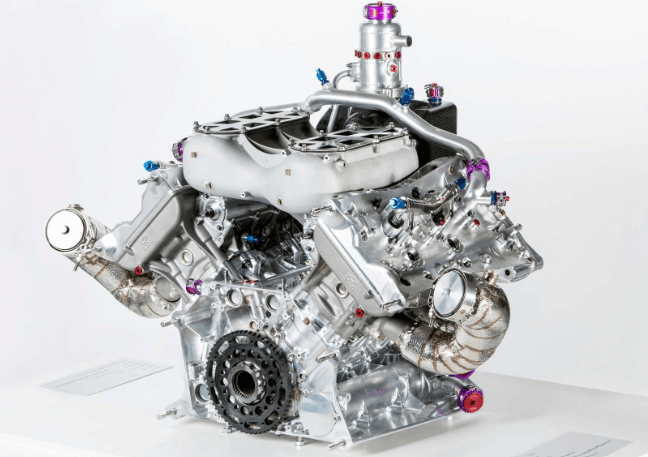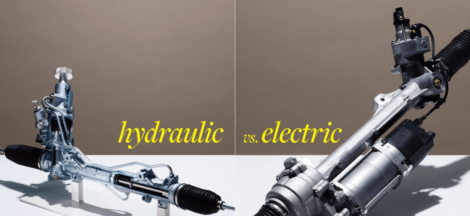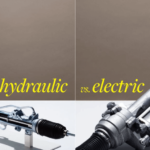A V4 engine, consisting of four cylinders arranged in a V shape, operates on reciprocating principles. Pistons in reciprocating engines transform fuel heat into rotational motion, moving forward and backward to generate mechanical power. V4 engines can have two sets of pistons arranged sequentially or oppositely, with popular vertical or horizontal designs. When purchasing a motorcycle with a V4 engine, securing comprehensive coverage is crucial by exploring bike insurance online for protection against potential risks.
The process for Bajaj Allianz third-party two-wheeler insurance renewal can be done seamlessly, even from the comforts of your home.
V4 Engine Configuration:
While V4 configurations are less common, they are still found in some powerful bikes and other applications. However, their adoption is limited due to higher costs, bulkiness, and weight than alternatives. V4 engines constitute a relatively small percentage of motorcycles in the market.
Design Characteristics:
The most widely used V4 engine configuration involves two crankpins mounted on opposing cylinders, typically positioned at a 90-degree angle. This design reduces vibrations, enhances balance, and features a stiff crankshaft to minimise torsional vibrations. Despite advantages, the wider build of V4 engines, requiring multiple cylinder heads, exhaust manifolds, and valve trains, increases complexity and cost.
Benefits Of V4 Engines:
Power And Smoothness: V4 engines offer superior strength, stiffness, and smoothness compared to inline 4-cylinder engines.
Increased Power: Due to stronger crankshafts, V4 engines can produce more power by increasing the revolution count.
Vibration Reduction: The engine design’s 60- or 90-degree angle significantly minimises vibrations, providing a smoother ride.
Effective Airflow: V4 engines’ crankcase facilitates efficient airflow, ensuring a higher proportion of combustion energy reaches the wheels, minimising pumping losses.
Compact Design: Despite increased complexity, the shorter length of a V4 engine simplifies packing, and more upright cylinder heads ease maintenance.
Challenges And Limitations Of V4 Engines:
Cost: The intricate design of V4 engines increases manufacturing costs, making them more expensive than inline-4 engines.
Weight Distribution: V4 engines have a higher centre of gravity, unfavourably impacting the bike’s weight distribution.
Complexity: With two-cylinder heads, valve trains, and exhaust manifolds, the installation and manufacturing of V4 engines have become more complicated.
Applications Of V4 Engines:
V4 engines find applications beyond motorcycles:
Cars: Some cars utilise V4 engines for enhanced power and torque, especially when equipped with a turbo.
Boats: V4 engines’ relatively short length makes them suitable for boats with outboard motors.
Motorcycles: V4 engines have a historical presence in motorcycles, notably in MotoGP racing, with some high-end bikes like the Ducati Panigale still employing this configuration.
Differences Between V4 And I4 Engines:
Price: V4 engines are more expensive than I4 engines.
Style: V4 engines have a V-shaped configuration, while I4 engines are installed in a straight line.
Mass: I4 engines are generally lighter than V4 engines.
Regardless of the engine type, purchasing online bike insurance is essential for safeguarding the vehicle against potential risks. Make sure you carry out the bike insurance renewal process on time for uninterrupted coverage. Claims are subject to terms and conditions set forth under the motor insurance policy. *
Subscribe to Bajaj Allianz General Insurance YouTube Channel here!
*Standard T&C Apply
Disclaimer: The content on this page is generic and shared only for informational and explanatory purposes. It is based on several secondary sources on the internet and is subject to changes. Please consult an expert before making any related decisions.
Insurance is the subject matter of solicitation. For more details on benefits, exclusions, limitations, terms, and conditions, please read the sales brochure/policy wording carefully before concluding a sale.





 A Comparison Of Electric Power Steering Vs. Hydraulic
A Comparison Of Electric Power Steering Vs. Hydraulic